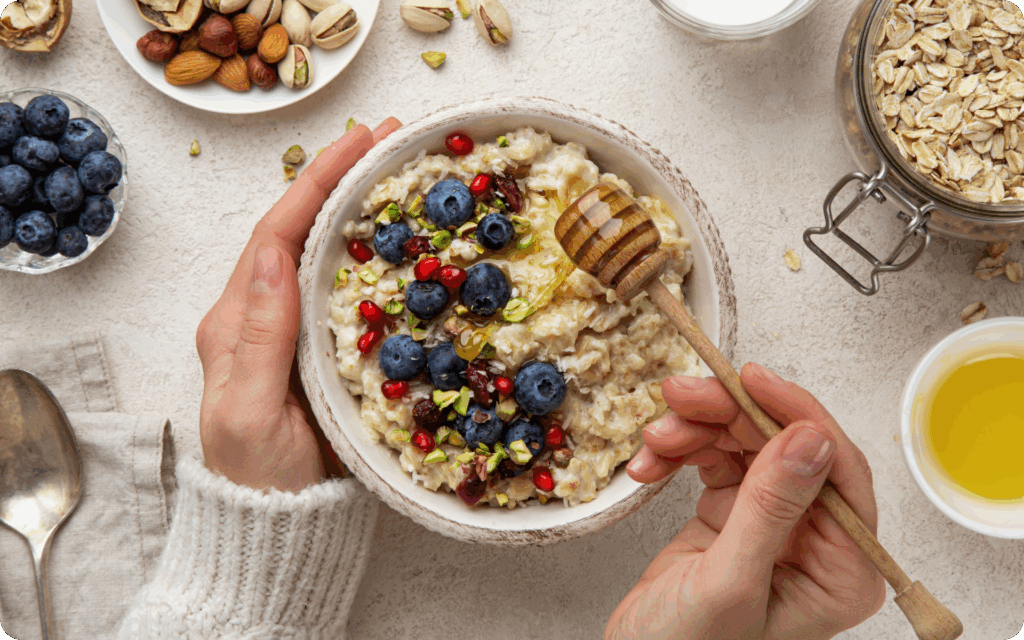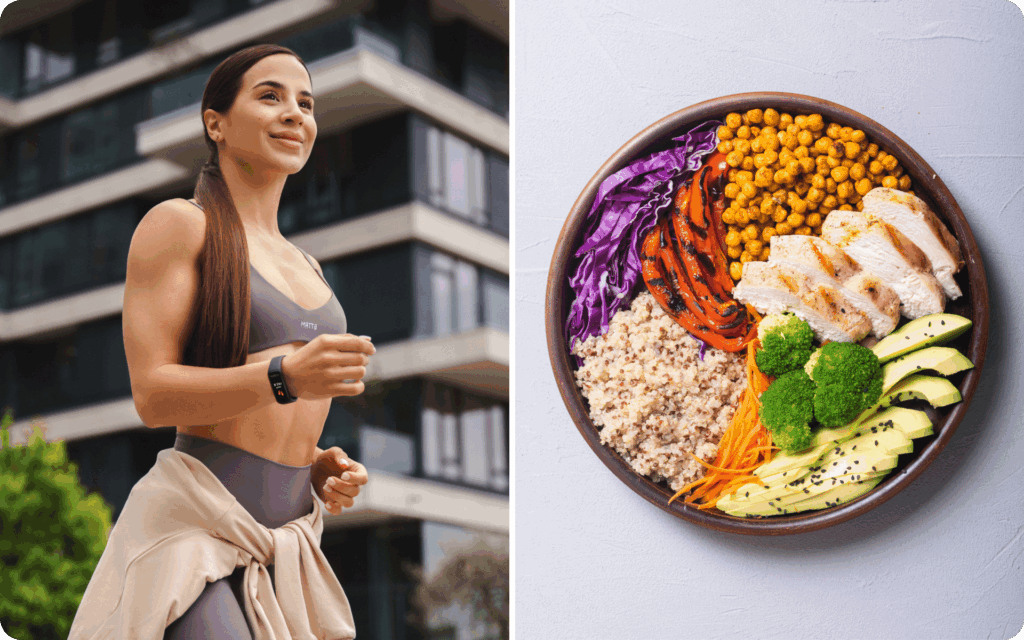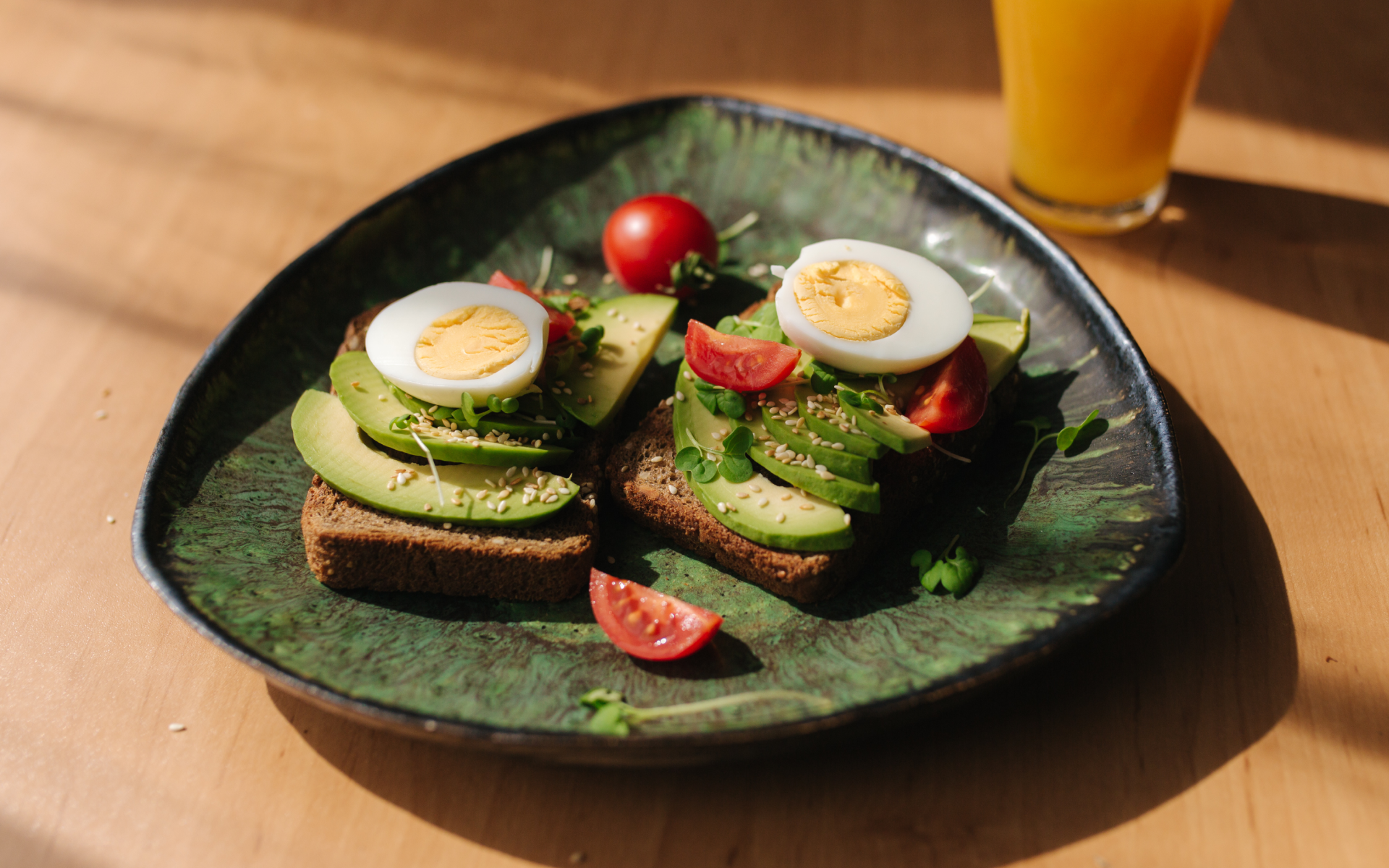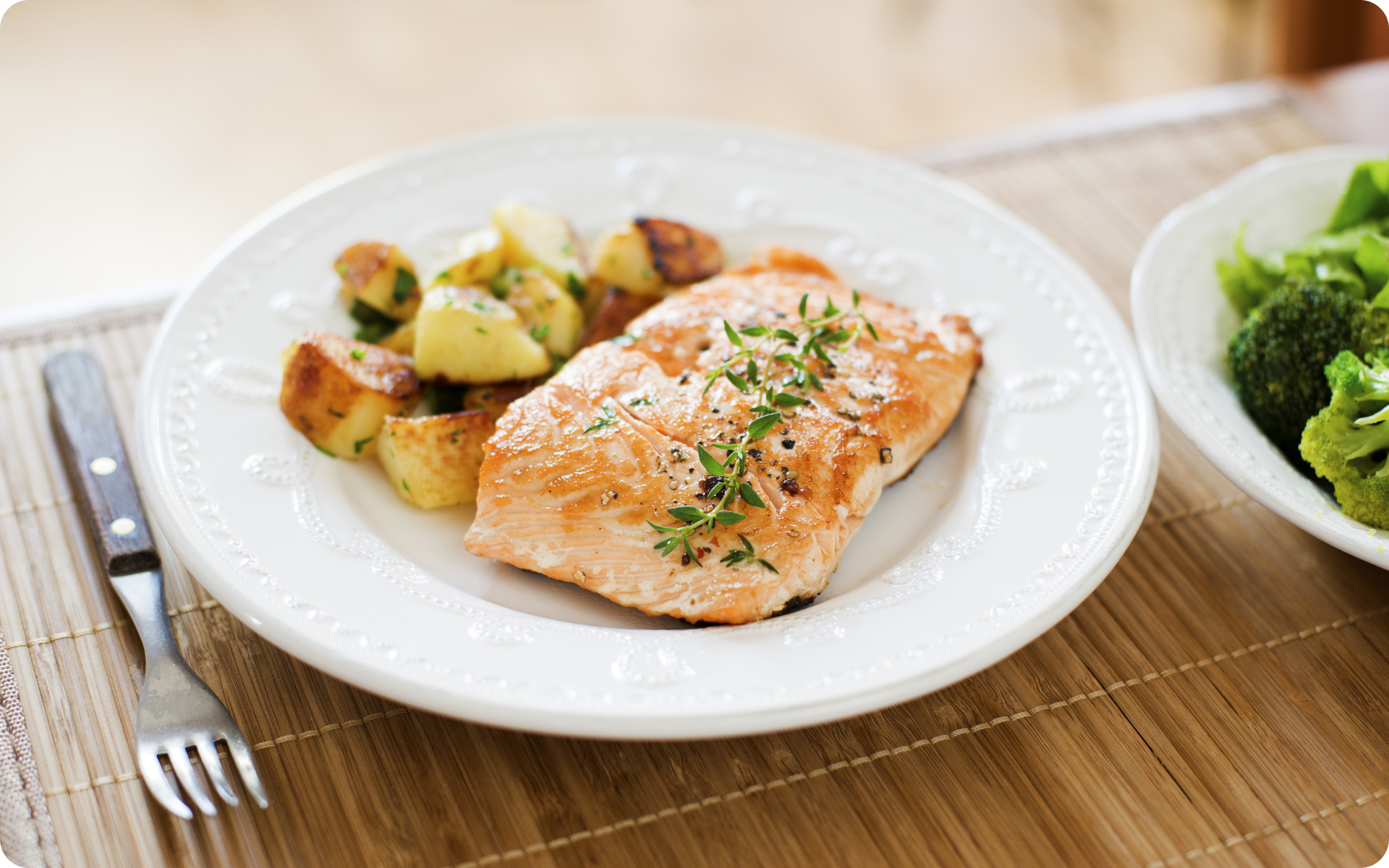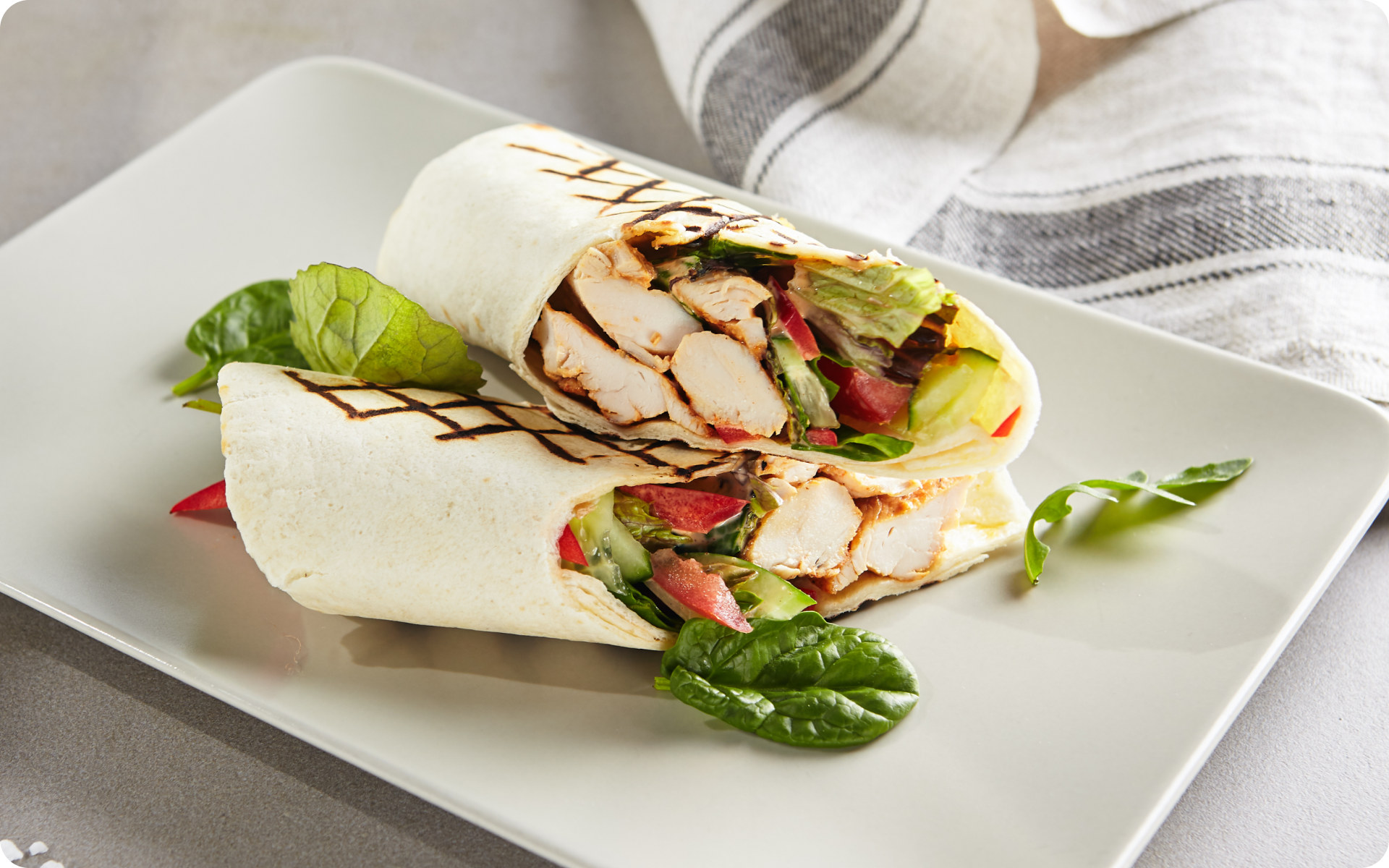Carbohydrates are among the most essential macronutrients that power our bodies.
They are known as energy-giving foods.
Hearing 300g of carbs, especially if you haven’t been keeping track of how much you consume, might make you wonder if 300g is a lot. Or is it low? Good or bad? Do carbs make you fat?
This article will help you understand what this amount of carbs means.
Health experts suggest that a healthy adult should consume about 45 – 65% of their total calorie intake as carbohydrates. That translates to about 200-300g of carbs per day for many people (3). So, consuming 300g of carbs in a day may be a healthy standard, and it may be high for some individuals. It depends on your individual daily energy needs and goals.
Before we move further into understanding this amount of carbs, it is crucial to at least know the sources of carbs. In this case, grains, pulses, and starchy vegetables such as rice, bread, oats, wheat, barley, pasta, quinoa, corn, and potatoes are just a few examples.
What Is A Day Of Eating With 300 Grams Of Carbs?
A day of 300g of carbs could be part of a special plan for people who have high energy demands, such as athletes or active people.
It can also serve those who want to add weight or gain muscle with 300 grams of carbs a day bodybuilding goals. It might also be a reasonable everyday target depending on your overall energy needs and goals.
With this target, you don’t just consume a whole 300g of carbs at once.
You distribute throughout your meals for the day, as in this example of a 300 grams of carbs a day meal plan:
- Breakfast (80g of carbs): Consider foods such as whole grain toast, oats, bananas, honey, and jam. Check the proportions and the amount of carbs to achieve about 80g of carbs in your breakfast.
- Lunch (80g of carbs): Brown rice, steamed vegetables, grilled chicken, and fruits. Target about 80g of carbs in your lunch.
- Afternoon Snack (50g of carbs): Berries, granola, and Greek yogurt. Ensure your snack is about 50g of carbs. You can choose the berries that you want, whether blueberries, blackberries, or raspberries.
- Dinner (70g of carbs): Pasta and tomato sauce, boiled beans, and mixed vegetables. For dinner, you are targeting about 70g of carbs.
- Evening Snack (20g of carbs): Oats and fruits, smoothies, crackers, and cheese. Also, target about 20g in your evening snack.
Of course, you can balance your meal with protein-rich foods that have zero carbs, as that won’t add to the overall carbs. This combination is to ensure that your meal is nutrient-dense, well-balanced, and filling.
Read more: Easy Low-Carb Meal Plan To Keep The Blood Sugar In Check
Is 300g Of Carbs Too Much?
As mentioned, 300g of carbs can be high for some individuals, or just right for others.
The recommended amount for many people with average energy needs is between approximately 200 and 300 grams of carbs per day.
So, if your individual needs require you to take closer to 200g per day, then an extra 100g per day would be significant to say it is too much. It all depends on individual needs and factors that include the following:
Level of Activity
People with a sedentary lifestyle or those who are not very active usually need a lower amount of carbs. This lower carb requirement is because their bodies are not burning as many calories. On the other hand, very active people such as athletes need a higher amount of carbs for energy and recovery.
The BetterMe: Health Coaching app will provide you with a host of fat-frying fitness routines that’ll scare the extra pounds away and turn your body into a masterpiece! Get your life moving in the right direction with BetterMe!
Individual Needs
Some people on keto or other low-carb diets may choose a diet without many carbs for weight loss or other reasons. How many carbs a day to lose weight and the high carb foods to avoid for weight loss depend on whether the foods and carb amounts fit into your calorie deficit goals.
Some people with health conditions such as type 2 diabetes or blood sugar issues may want to cut down on the amount of carbs due to their personal health needs.
Weight Goals
When it comes to weight management, people who want to lose weight may consider low-carb diets, because for some people, it is an easy way to reduce calorie intake. On the other hand, those who want to add some weight may consider a higher-carb diet.
Age and Sex
Men and younger adults tend to have higher metabolic rates and more muscle mass, and hence need more energy than older adults and women. In addition to that, the young ones are often more active.
Total Calorie Needs
As mentioned, a healthy adult should eat about 45-65% of their total calorie needs as carbohydrates. Therefore, the more daily calories an individual needs, the higher the amount of carbs they need to consume. That is why there is no universal amount that is suitable for everyone, as the amount varies with individual needs and other factors we have discussed.
So, for more active individuals with higher energy needs, 300g of carbs per day is sufficient. But for people with health issues such as type 2 diabetes, those who want to lose weight, and those living a sedentary lifestyle, 300g per day may be too much, but it still depends on their individual energy needs.
How Many Calories Are 300 Grams Of Carbs?
300g of carbs would translate to 1200 calories. It is essential to understand that carbohydrates provide 4 calories per gram (1).
Therefore, (300g of carbs x 4) = 1200 calories.
Is It Ok To Eat 300g Of Carbs A Day?
As we have mentioned, the amount of carbs needed per day will depend on individual needs, health conditions, activity level, and weight goals, among other factors.
For instance, athletes who engage in extensive training or highly active individuals require more carbohydrates than those who are less active. In that regard, the level of activity would influence whether it is okay to eat 300g of carbs or not, because physical activity requires extra energy.
Regarding weight management, if your goal is to lose weight, your energy needs will decrease, which in turn reduces your carbohydrate needs. If you aim to increase, then you can increase the amount of calories and carbs that you consume daily.
The specific number of grams you need will depend on your fitness goals and overall energy needs. Health condition is another factor, as we explained earlier.
If you need to control your blood sugar, you should be careful about the amount of carbs you eat. In that regard, 300g could be high for you, but it still depends on all the same factors that influence your energy needs.
What Can I Eat For 300g Of Carbs?
To achieve 300g of carbs, you need to spread the carb amounts throughout your day’s meals. That is breakfast, lunch, dinner, and snacks.
The plan below is a simple example that you can adapt or adjust to suit your preferences:
Breakfast (80g of Carbs)
- A cup of cooked oatmeal (about 27g of carbs)
- Whole grain toast slice with some honey (about 25g of carbs)
- Banana (about 27g of carbs)
Total carbs for breakfast = about 79g.
Lunch (80g of Carbs)
- A cup of cooked rice (about 45g of carbs)
- A cup of cooked lentils or beans (about 30g)
- A small apple (about 15g)
Total carbs for lunch = about 90g.
Afternoon Snack (50g of Carbs)
- Whole wheat bread with peanut butter sandwich (about 30g of carbs)
- A cup of low-fat yogurt with some berries (about 20g of carbs)
Total carbs for afternoon snack = about 50g.
When it comes to weight loss, progress is made by inches, not miles, so it’s much harder to track and a lot easier to give up. The BetterMe: Health Coaching app is your personal trainer, nutritionist, and support system all in one. Start using our app to stay on track and hold yourself accountable!
Dinner (90g of Carbs)
- 1 ½ cups of cooked pasta (about 65g of carbs)
- A cup of steamed sweet potatoes (about 25g of carbs)
- Grilled chicken breast (0 carbs)
Total carbs for dinner = about 90g.
This plan is just a simple example of how to achieve 300g of carbs per day.
You can adjust this to include your favorite meals while aiming for these approximate carbohydrate targets, and enjoy high-carb low-fat foods such as yogurt.
Read more: Can You Lose Weight Eating Zero-Carb Meals?
What Is The Highest Carb Food?
Grains like rice have among the highest amounts of carbs (5).
The other highest carb foods include bread, pasta, sweet potatoes, corn, wheat, barley, and potatoes. Some of the sugary foods or those with added sugars and high in carbohydrates include cookies, cakes, sugary beverages, and candies, although it’s best to include these treats sparingly. It’s better to focus on more complex carbohydrates from whole grains, pulses, fruits, and vegetables.
Any carbs that are above the recommended 200-300g per day (or 45-65% of total energy needs) may be considered high for the average person. The exact amount of carbs that we can say is high, however, depends on individual needs and other factors such as activity level, age, sex, and health conditions, among others. Added sugar is the number one carb to avoid. The added sugar exists in processed snacks and sugary drinks. These types of foods are high in calories while not being very filling. They are also hyperpalatable, which makes them easy to overeat. Eating a lot of added sugars can contribute to weight gain, which over time can increase the risk of certain chronic diseases (4). One food that has among the highest amounts of carbs is rice. 1 cup of cooked white rice contains about 53g of total carbohydrates (5). Other foods high in carbs are breads, pastas, and other products made from wheat, barley, and corn. Yes, pasta is high in carbs, especially the more refined ones. A cup (124g) of pasta contains about 38g of carbs (2). Whole wheat pasta will have a similar amount of carbs, but more fiber, which makes it slower-digesting and more filling.Frequently Asked Questions
How many carbs is considered high?
What is the number one carb to avoid?
What is the highest-carb food?
Is pasta high in carbs?
The Bottom Line
As per the general recommendations and what we have discussed above, 300g of carbs is on the higher end of carb intake per day for the average person.
It is, however, essential to understand that this can be a standard for some people and can be high for some.
For highly active individuals with no health issues limiting them, or those looking to gain weight, 300g of carbs per day is likely not excessive.
However, for people with some health issues like type 2 diabetes or blood sugar issues, being overweight, or living a sedentary lifestyle, then 300g of carbs per day may be too much (depending on their overall energy needs and goals), as already discussed.
Therefore, it is vital to understand your health goals, lifestyle, activity level, and other factors we have discussed to determine whether this amount of carbs is suitable for you. Talk to your healthcare provider or a registered dietitian for individualized advice.
DISCLAIMER:
This article is intended for general informational purposes only and does not serve to address individual circumstances. It is not a substitute for professional advice or help and should not be relied on for making any kind of decision-making. Any action taken as a direct or indirect result of the information in this article is entirely at your own risk and is your sole responsibility.
BetterMe, its content staff, and its medical advisors accept no responsibility for inaccuracies, errors, misstatements, inconsistencies, or omissions and specifically disclaim any liability, loss or risk, personal, professional or otherwise, which may be incurred as a consequence, directly or indirectly, of the use and/or application of any content.
You should always seek the advice of your physician or other qualified health provider with any questions you may have regarding a medical condition or your specific situation. Never disregard professional medical advice or delay seeking it because of BetterMe content. If you suspect or think you may have a medical emergency, call your doctor.
SOURCES:
- How many calories are in one gram of fat, carbohydrate, or protein? (n.d., nal.usda.gov).
- Pasta (n.d., nutritionix.com)
- Physiology, Carbohydrates (2023, ncbi.nlm.nih.gov).
- The Sweet Danger of Sugar (2022, health.harvard.edu).
- Rice, white, medium-grain, enriched, cooked (n.d., https://fdc.nal.usda.gov/)


